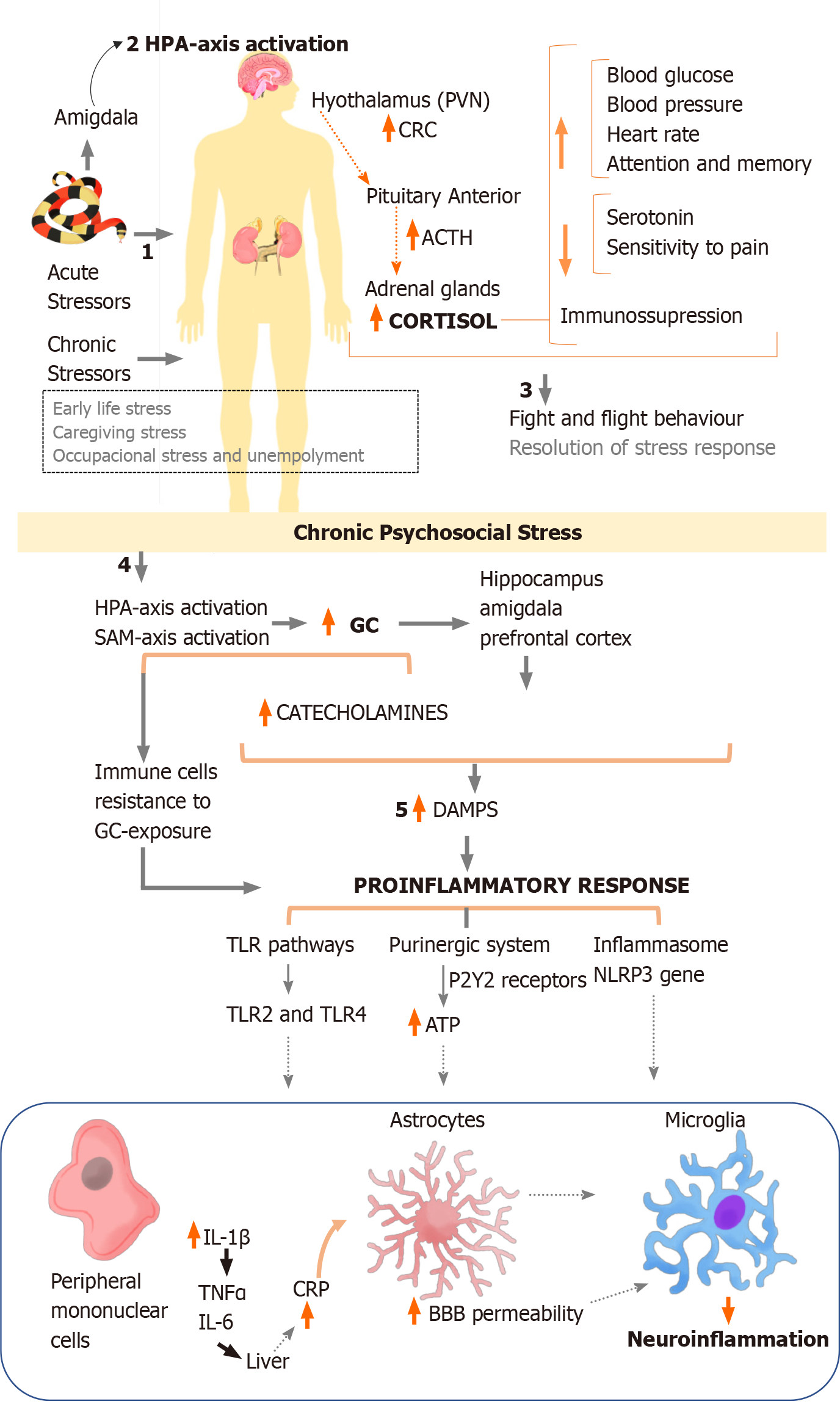Copyright
©The Author(s) 2021.
World J Psychiatr. Sep 19, 2021; 11(9): 553-567
Published online Sep 19, 2021. doi: 10.5498/wjp.v11.i9.553
Published online Sep 19, 2021. doi: 10.5498/wjp.v11.i9.553
Figure 1 Synthesis of stress acute and chronic response on the inflammatory pathway.
(1-2) Stressors trigger a primary neuroendocrine response from the hypothalamic-pituitary-adrenal (HPA) axis. Hypothalamic Parvocellular neurons from the paraventricular nucleus secrete a corticotrophin-releasing hormone (CRH) and vasopressin. CRC induces, subsequently, the anterior hypophysis to release the adrenocorticotropic hormone, leading to a glucocorticoid secretion (cortisol in humans and corticosterone in rodents) by the adrenal cortex; (3) Acute physiological alterations prepare the human to fight or flight from stressors. These are evolutionary adaptive behaviors related to surveillance. Therefore, stress induces transient activation of HPA- axis activity paralleled by temporary increases in CRH transcription. Sympathetic-Adreno-Medullar axis is also activated in the stress response causing several physiological systemic changes. Acute stress also leads to an immunosuppressive state; (4) On the contrary, the exposure to chronic stress leads to excessive sustained elevated levels of stress hormones, including CRH and corticosterone, can be harmful and predispose to risk of several chronic non-transmissible diseases, including psychiatric disturbs; (5) And mechanisms involving an increase in neural apoptosis an in the levels of some molecules associated to stress response, especially catecholamines. These processes induce the production of immunogenic Damage-associated molecular patterns (DAMPs) molecules. (6) DAMPs can activate at least three inflammatory pathways that contribute to the increase of brain-blood barrier permeability, promoting ingress of some systemic peripheral inflammatory cells into the brain contributing to the neuroinflammatory states cause dysfunction and increase the risk of depression. HPA: Hypothalamic-pituitary-adrenal; PVN: Paraventricular nucleus; CRH: Corticotrophin-releasing hormone; VP: Vasopressin; ACTH: Adrenocorticotropic hormone; GC: Glucocorticoid; SAM: Sympathetic-Adreno-Medullar; DAMPs: Damage-associated molecular patterns; BBB: Brain-blood barrier.
- Citation: do Prado-Lima PAS, Costa-Ferro ZSM, Souza BSF, da Cruz IBM, Lab B. Is there a place for cellular therapy in depression? World J Psychiatr 2021; 11(9): 553-567
- URL: https://www.wjgnet.com/2220-3206/full/v11/i9/553.htm
- DOI: https://dx.doi.org/10.5498/wjp.v11.i9.553









